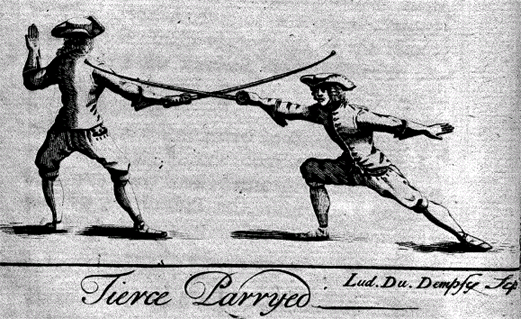Who/Where/When/How:
History has been defined as way of looking at facts. Faced with a multitude of often contradictory "facts", it is not
surprising that historians have been very selective in their retellings of the stories of Great Britain and Europe as a whole.
It is curious however that historians have refused to face the fact that for generation after generation, every free
Englishman went about his daily duties armed.(Aylward, I)
Today, the term "martial arts" seems to be synonymous with the fighting styles of Asia. However, the martial cultures of
Western Europe are steeped in rich traditions. While no one denies the fact that the knightly culture of medievel Europe
certainly had a focus on combat, many historians pay little attention to the fact that many systems of combat developed
during and prior to this time were organized or had any scholarly curriculum.
Who studied Eighteenth Century British
Martial Arts?
From the twelfth through the mid-seventeenth centuries, during which the systems of combat exhibited their most volatile
changes, all men both young and old, rich and poor, were expected to be versed in the many different modes of fighting.
In an era when all men were expected to take up their arms in the interests of their lord for whatever occasion was deemed
necessary, almost all men expected to face combat at some point in their lives.
Farmers, peasants, servants, and the lower classes studied the cheapest of all weapons, the "unarmed" techniques, as well
as the next cheapest set of weapons, wooden pole arms. These were favored because they were readily available and technically
easier to obtain proficiency in than the sword.
The middle class land owners, merchants, etc., typically favored more advanced pole arms such as the axe. However, during the
eighteenth century, pugilism, or boxing became immensely popular as a gladiatorial type event. It was even seen as a mode
by which to rise through the ranks of the classes. This pugilism was not only fighting with the fists, but incorporated grappling
as well as kicking.
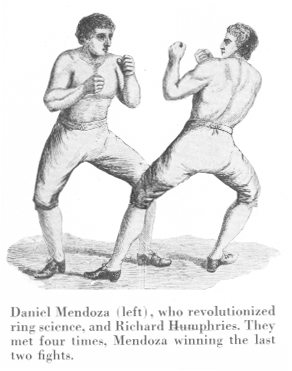
The upper class nobles, gentry, politicians, aristocrats, etc. favored heavily the sword. It was declared that only the upper
class were allowed to wear the sword in public and it became highly fashionable to do so. For the upper class, a strong knowledge
and background in the siences of defense was considered a part of any education. Just as it was expected of a gentleman to
know french or latin, he was also expected to be versed in the quarterstaff, pugilism, and fencing. Projectile weapons were
very popular among the upper classes as well, however the modern small-sword was considered the more tasteful weapon.
The military soldier by this time was trained in both projectile weapons such as the musket, rifle, and pistol as well as
the swords of the rapier and sabre. The lower ranks were also trained in a new type of hybrid weapon, the bayonet.
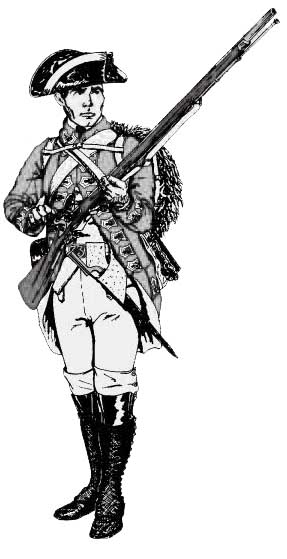
There was also another class that studied all methods of combat, the maisters. The maisters or, masters of arms/defence were
a class that existed between the merchant class and the upper class. The masters were often able to set up schools or academies
at which they would teach and hold competitions. If a master made a good name for himself he could easily maintain his school
with the patronage of men from the gentry as well as some merchants.

Maisters often had business cards on which were printed the many weapons that they had mastered and taught.
Where were Eighteenth Century British
Martial Arts studied?
The martial arts were often studied at the acedemies and schools of maisters. There were maisters of pugilism, fencing, projectiles,
etc. James Figg the champion pugilist had an amphitheatre where he taught, and men such as Monsier Faubert had places where
they would teach their arts.
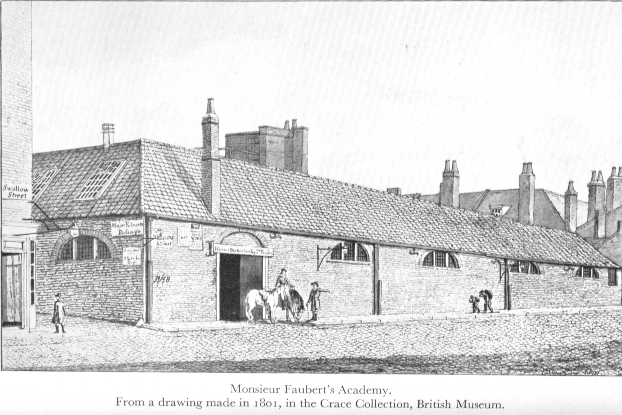
Some maisters had such a large patronage that they found themselves very wealthy. It is recorded that some masters
academies were so large you could play tennis in them.(Aylward, 189) These academies were places of congregation and comeradery
as well as places of serious study.
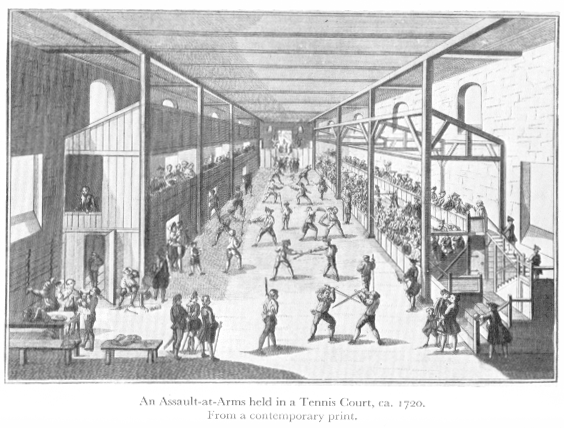
When were Eighteenth Century British
Martial Arts studied?
The merchant class, saw martial arts as a leasure as well as for protection. They had much to lose were they to be attacked by
bandits, or ruffians. Gentlemanly conflicts almost never erupted right away and so sometimes a fight would be agreed to take place
even a few days from the original conflict, allowing time for extra training. Professional pugilists sougt to train all of the
time as well.
The sciences of defence were seen as crucial to an upperclass education and thus training in them for boys was encouraged
from an early age. In times of war or conflict as well as in times of peace, training in the manly arts was considered essential.
One might be called upon to defend his honor at anytime. Considering that quarrelling among and between the upper class
was common, one had to be prepared at all times.
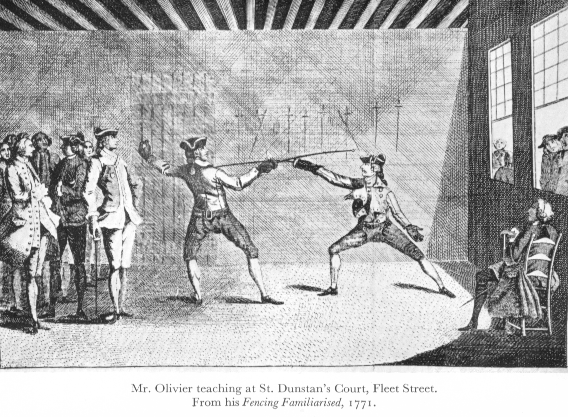
The military trained almost all of the time. At any time a conflict with France or the Scots could erupt. As well, it was
seen as necessary to keep the military trained and in good condition.
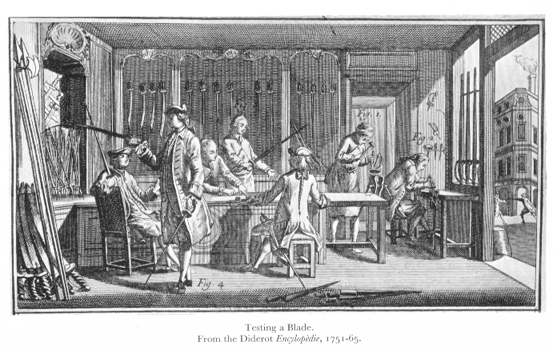
How were Eighteenth Century British
Martial Arts studied?
Among the lower classes british martial arts were handed down from father to son, uncle to nephew, etc. Typically, there were
not many treatises or manuals for the lower figting arts. This is not to say that none existed. There is in fact a handful of
manuals on fighting with the staff as well as many medieval manuscripts that describe staff and pole arm techniques as well
as unarmed methods.
There is a large volume of works by eighteentch century English maisters on their schools of fencing and defence. Ranging from
the small-sword, to the hungarian broadsword, to the rapier. It was not uncommon for a maister to travel abroad to Italy and
Spain, where the sciences of defence were being perfected. He might then return with new skill, techniques, etc. and claim them
as his own. It was typical for a maister to write a manual of defence in order to make his school more popular and to increase
his patronage. Thus students would study the texts of many maisters, determine which was best and seek him out.
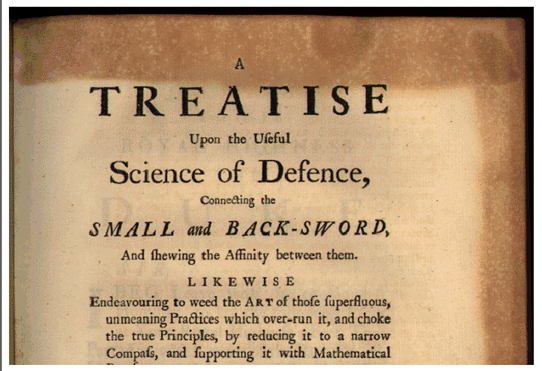
Learn more about manuals here.
Actual training could at times be quite brutal. Typically, for swordplay, a training weapon called a waister, a wooden sword,
might be used. Yet very little protection aside from padded gloves and a canvas jacket might be used. (Aylward, 184) The
modern round tipped foil did not exist until the nineteenth century nor did the modern fencing mask. There was a version of a
fencing hood but it offered little in the way of protection from thrusts.
